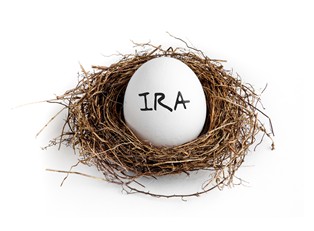A Traditional IRA is an individual retirement account that allows you to stash away some of your income on a pre-tax basis to use later in your life. Contributions to a Traditional IRA are subject to some rules:
- Contributions are limited to $5,500 of your income for 2014 if you are under the age of 50.
- The catch-up provision allows for the contribution of an additional $1,000 of your income for 2014 if you are over the age of 50.
- After age 70 1/2, individuals are no longer eligible to contribute to a Traditional IRA.
With Traditional IRAs, you defer taxes until you begin to withdraw money. Rules for withdrawal vary based on your age. Traditional IRA withdrawals taken prior to age 59 1/2 are typically subject to a penalty of 10%. A few exceptions exist that may allow you to avoid the penalty:
- Medical expenses that exceed 7.5% of the person's gross income.
- For qualified higher education expenses, but this is considered taxable income by the IRS.
- Death or disability before the age of 59 1/2
- Medical Insurance payments if the person has been unemployed for longer than 12 weeks.
- Withdrawals by the IRS from a lien placed on your IRA.
- First time home buyers may withdraw up to $10,000 to assist with the purchase of the home.
As with any good retirement plan, it's best to check with an accountant or financial planner for rules about Traditional IRA distributions and other features regarding withdrawals. Also, check for rules about a Traditional IRA withdrawals that become mandatory once you reach the age of 70 1/2.
What are the Tax Benefits?
A Traditional IRA does have some tax savings, although the Traditional IRA rules have some exceptions. Generally speaking, a Traditional IRA contribution can be tax deductible subject to the following rules:
With a retirement plan at work:
- Single or Head of Household can deduct the entire amount of the contribution if the adjusted gross income is less than $60,000 and you may get a partial deduction up to $70,000. The deduction is "phased out" based on income levels.
- Married filing jointly can deduct the entire amount of the contribution if the adjusted gross income is less than $96,000 with a partial deduction for up to $116,000. The deduction is "phased out" based on income levels.
- Married filing separately cannot have any deductions, excepting for a "phased out" amount coordinating with an adjusted gross income of less than $10,000.
Without a retirement plan at work:
- If the spouse is NOT covered by a plan at work, any amount you contribute is tax deductible.
- If the spouse is covered by a plan at work, an IRA is deductible up to $181,000, with a "phased out" partial deduction up to $191,000.
- Like with a retirement plan at work, married filing separately has no deductions, excepting for a partial "phased out" amount coordinating with an adjusted gross income of less than $10,000.
In conclusion, a Traditional Individual Retirement Account is an excellent way to save money for help with the later years of your life as long as you understand the rules and tax implications regarding it. See IRS Publication 590 as IRA contribution rates and rules can change each year.



